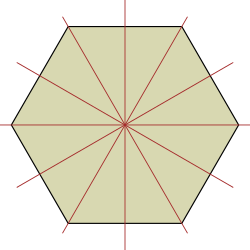
Back نظرية التمثيل Arabic Күрһәтмәләр теорияһы Bashkir Тэорыя прадстаўленняў Byelorussian Teoria de la representació Catalan Майлаштарусен теорийĕ CV Repræsentationsteori Danish Darstellungstheorie German Θεωρία αναπαραστάσεων Greek Teoría de representación Spanish Errepresentazioaren teoria Basque

Representation theory is a branch of mathematics that studies abstract algebraic structures by representing their elements as linear transformations of vector spaces, and studies modules over these abstract algebraic structures.[1][2] In essence, a representation makes an abstract algebraic object more concrete by describing its elements by matrices and their algebraic operations (for example, matrix addition, matrix multiplication). The theory of matrices and linear operators is well-understood,[citation needed] so representations of more abstract objects in terms of familiar linear algebra objects helps glean properties and sometimes simplify calculations on more abstract theories.
The algebraic objects amenable to such a description include groups, associative algebras and Lie algebras. The most prominent of these (and historically the first) is the representation theory of groups, in which elements of a group are represented by invertible matrices such that the group operation is matrix multiplication.[3][4]
Representation theory is a useful method because it reduces problems in abstract algebra to problems in linear algebra, a subject that is well understood.[5] For instance, representing a group by an infinite-dimensional Hilbert space allows methods of analysis to be applied to the theory of groups.[6][7] Furthermore, representation theory is important in physics because it can describe how the symmetry group of a physical system affects the solutions of equations describing that system.[8]
Representation theory is pervasive across fields of mathematics. The applications of representation theory are diverse.[9] In addition to its impact on algebra, representation theory
- generalizes Fourier analysis via harmonic analysis,[10]
- is connected to geometry via invariant theory and the Erlangen program,[11]
- has an impact in number theory via automorphic forms and the Langlands program.[12]
There are diverse approaches to representation theory. The same objects can be studied using methods from algebraic geometry, module theory, analytic number theory, differential geometry, operator theory, algebraic combinatorics and topology.[13]
The success of representation theory has led to numerous generalizations. One of the most general is in category theory.[14] The algebraic objects to which representation theory applies can be viewed as particular kinds of categories, and the representations as functors from the object category to the category of vector spaces.[4] This description points to two obvious generalizations: first, the algebraic objects can be replaced by more general categories; second, the target category of vector spaces can be replaced by other well-understood categories.
- ^ Classic texts on representation theory include Curtis & Reiner (1962) and Serre (1977). Other excellent sources are Fulton & Harris (1991) and Goodman & Wallach (1998).
- ^ "representation theory in nLab". ncatlab.org. Retrieved 2019-12-09.
- ^ For the history of the representation theory of finite groups, see Lam (1998). For algebraic and Lie groups, see Borel (2001).
- ^ a b Etingof, Pavel; Golberg, Oleg; Hensel, Sebastian; Liu, Tiankai; Schwendner, Alex; Vaintrob, Dmitry; Yudovina, Elena (January 10, 2011). "Introduction to representation theory" (PDF). www-math.mit.edu. Retrieved 2019-12-09.
- ^ There are many textbooks on vector spaces and linear algebra. For an advanced treatment, see Kostrikin & Manin (1997).
- ^ Sally & Vogan 1989.
- ^ Teleman, Constantin (2005). "Representation Theory" (PDF). math.berkeley.edu. Retrieved 2019-12-09.
- ^ Sternberg 1994.
- ^ Lam 1998, p. 372.
- ^ Folland 1995.
- ^ Goodman & Wallach 1998, Olver 1999, Sharpe 1997.
- ^ Borel & Casselman 1979, Gelbart 1984.
- ^ See the previous footnotes and also Borel (2001).
- ^ Simson, Skowronski & Assem 2007.